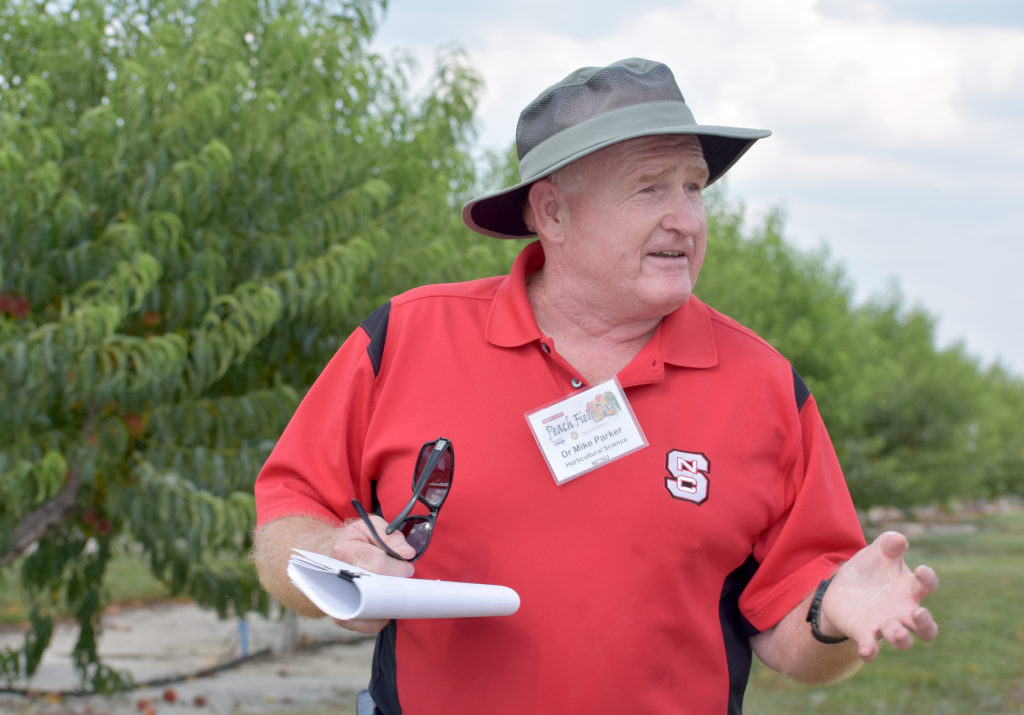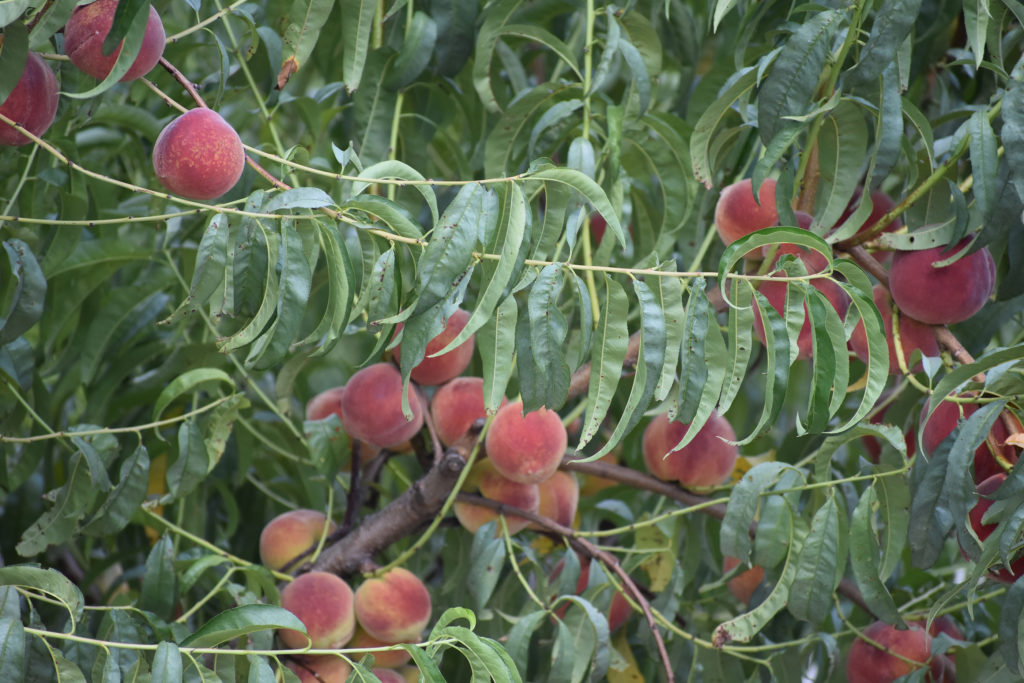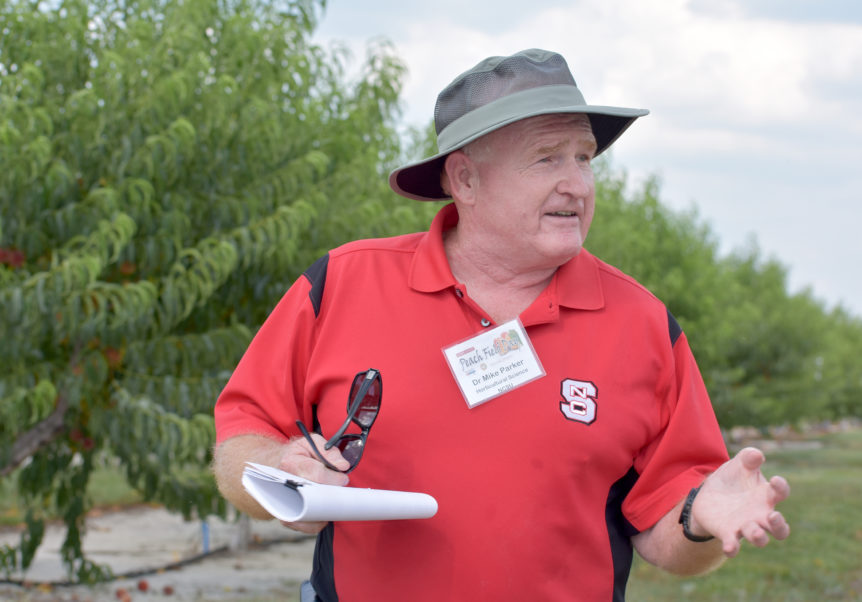
By Clint Thompson
One of the most tedious, but necessary parts of peach production centers on fruit thinning. Producers must remove much of their crop so what’s remaining can increase in size and yields.
One North Carolina State University researcher is confident a chemical option will soon be a viable alternative for growers.

Mike Parker, associate professor and Extension specialist in horticultural science at N.C. State, has researched Accede since 2017. He discussed its effectiveness at the Peach Field Day at the Sandhills Research Station last week. Parker stresses that this would greatly reduce the expense and time associated with thinning the crop.
“An average peach grower could spend $1,200 to $2,000 an acre thinning, because it’s all done by hand. It’s time dependent,” Parker said. “It’s expensive, but we just don’t have the labor.
“We don’t have a fruit thinner, which I would much rather have, but at least we do have a bloom thinner. I can see this being a game changer for peach production.”
Parker said growers should apply the sprays when the crop is between 50% and 80% full bloom. While it will not totally remove the necessary blooms, it will give growers a head start.
“If we look at a full crop, we need to take off 80% to 85% of the fruit. But if I can come in and take off half of that fruit, to me, that’s a game changer,” Parker said.
Producers may not need to come in and remove the rest by hand, either. A predictable late-season freeze event could remove the rest.
“Since it is a bloom thinner, we know the chance of having a frost or freeze event after bloom is real. If I can come in and take off 50% of the fruit and still allow for crop loss from frost or freeze… that’s a goal I’m looking at,” Parker said.










